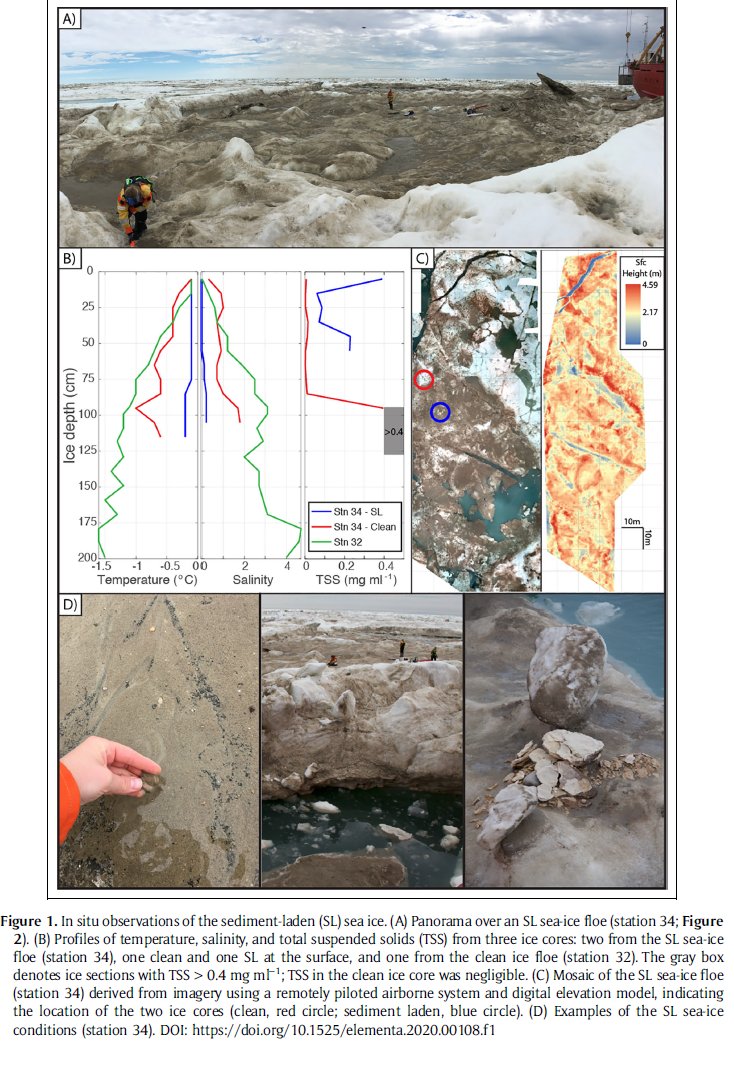Sediment-laden sea ice in southern Hudson Bay: Entrainment, transport, and biogeochemical implications
New publication by D. G. Barber, M. L. Harasyn1, D. G. Babb, D. Capelle, G. McCullough, L. A. Dalman, L. C. Matthes, J. K. Ehn, S. Kirillov, Z. Kuzyk, A. Basu, M. Fayak, S. Schembri, T. Papkyriakou, M. M. M. Ahmed, B. Else, C. Gueguen, C. Meilleur, I. Dmitrenko, C. J. Mundy, K. Gupta, S. Rysgaard, J. Stroeve, and K. Sydor

Abstract:
During a research expedition in Hudson Bay in June 2018, vast areas of thick (>10 m), deformed sedimentladen sea ice were encountered unexpectedly in southern Hudson Bay and presented difficult navigation conditions for the Canadian Coast Guard Ship Amundsen. An aerial survey of one of these floes revealed a maximum ridge height of 4.6 m and an average freeboard of 2.2 m, which corresponds to an estimated total thickness of 18 m, far greater than expected within a seasonal ice cover. Samples of the upper portion of the ice floe revealed that it was isothermal and fresh in areas with sediment present on the surface. Finegrained sediment and larger rocks were visible on the ice surface, while a pronounced sediment band was observed in an ice core. Initial speculation was that this ice had formed in the highly dynamic Nelson River estuary from freshwater, but d18O isotopic analysis revealed a marine origin. In southern Hudson Bay, significant tidal forcing promotes both sediment resuspension and new ice formation within a flaw lead, which we speculate promotes the formation of this sediment-laden sea ice. Historic satellite imagery shows that sediment-laden sea ice is typical of southern Hudson Bay, varying in areal extent from 47 to 118 km2 during June. Based on an average sediment particle concentration of 0.1 mg mL–1 in sea ice, an areal extent of 51,924 km2 in June 2018, and an estimated regional end-of-winter ice thickness of 1.5 m, we conservatively estimated that a total sediment load of 7.8 * 106 t, or 150 t km–2,was entrained within sea ice in southern Hudson Bay during winter 2018. As sediments can alter carbon concentrations and light transmission within sea ice, these first observations of this ice type in Hudson Bay imply biogeochemical impacts for the marine system.
